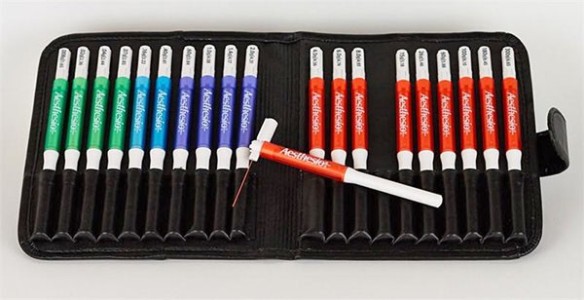Authors
J Shia, K Jiang, Z Li
Lab
Department of Anesthesiology, Guizhou Provincial Peoples Hospital, China
Journal
Nueroscience Research
Abstract
Neuropathic pain perplexes a large population of patients with various diseases. Inflammation plays a key role in the physiopathology of neuropathic pain. Anti-inflammatory can be a promising strategy to treat neuropathic pain. We generated a chronic constriction injury rat model to mimic neuropathic pain by ligating the left ischiadic nerves of rats. Then we performed intrathecal injection of miR-145 mimics to treat these rats for seven consecutive days. Pain behavior tests including mechanical allodynia and thermal hyperalgesia, pro-inflammatory cytokines including tumor necrosis factor (TNF)-_, interleukin (IL)-1_ and IL-6 were analyzed. Quantitative polymerase chain reaction and immunoblotting were performed to detect the changes of signaling pathway after miR-145 mimic treatment. Targeting of Akt3 by miR-145 was studied by dual-luciferase reporter gene assays. MiR-145 mimics injection significantly mollified both mechanical allodynia and thermal hyperalgesia in rats, and down-regulated secretion of TNF-_, IL-1_ and IL-6. We confirmed that miR-145 directly targeted Akt3, inhibiting NF-_B and mTOR downstream genes in rat dorsal root ganglia. MiR-145 can mollify neuropathic pain in a chronic constriction injury rat model by reducing inflammation and ion channel overexpression through Akt3/mTOR and Akt3/NF-_B signaling pathways.
BIOSEB Instruments Used
Von Frey Filaments (Bio-VF-M)
Source :
https://www.sciencedirect.com/science/article/pii/S0168010217303851

 Douleur - Allodynie/Hyperalgésie Thermique
Douleur - Allodynie/Hyperalgésie Thermique Douleur - Spontanée - Déficit de Posture
Douleur - Spontanée - Déficit de Posture Douleur - Allodynie/Hyperalgésie Mécanique
Douleur - Allodynie/Hyperalgésie Mécanique Apprentissage/Mémoire - Attention - Addiction
Apprentissage/Mémoire - Attention - Addiction Physiologie & Recherche Respiratoire
Physiologie & Recherche Respiratoire




































 Douleur
Douleur Système Nerveux Central (SNC)
Système Nerveux Central (SNC)  Neurodégénérescence
Neurodégénérescence Système sensoriel
Système sensoriel Système moteur
Système moteur Troubles de l'humeur
Troubles de l'humeur Autres pathologies
Autres pathologies Système musculaire
Système musculaire Articulations
Articulations Métabolisme
Métabolisme Thématiques transversales
Thématiques transversales Congrès & Meetings
Congrès & Meetings 